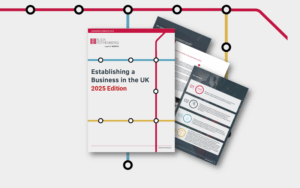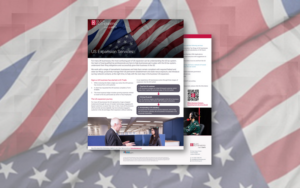Spotlight on…Corporate Interest Restriction
Ravi Singh Basra and Tim Shaw provide an overview of the Corporate Interest Restriction rules and certain practical considerations
For a UK company or group, there are interest limitation rules that can restrict the amount of tax relief available for interest and finance costs.
When introduced in April 2017, the Corporate Interest Restriction (CIR) rules were aimed at highly leveraged large multi-national groups. However, these have inadvertently caught many stand-alone companies.
Why are they relevant?
The aim of the rules is to restrict a company’s or group’s deductions for interest expense and other financing costs to an amount commensurate with its taxable activities within the UK, taking into account how much the company or group borrows from third parties.
The CIR rules essentially limit the amount of net tax interest costs (applying UK tax principles) a company or group can deduct from its taxable profits if these exceed £2m per annum.
The actual mechanics of the CIR calculation are highly complex.
Who are they relevant to?
In principle, the rules apply to all companies within the charge to Corporation Tax.
The CIR rules apply to individual companies or groups of companies that will deduct over £2m of net tax interest in a 12-month period.
A company or group with less than £2m of net tax interest expense and other financing costs per annum will not suffer any restriction. Beyond taking reasonable care to establish that this is the case, companies in such groups are not affected by the rules. Establishing if a company or group falls below the de-minimis can be a detailed exercise.
What do you need to know?
For a company or group with net tax interest costs exceeding the de-minimis threshold of £2m, you must work out the ‘interest allowance’. This is the maximum amount of net tax interest and financing costs the company or group can deduct in the period of account.
You can use the ‘fixed ratio method’ or the ‘group ratio method’ to calculate the above. You should use the method that gives you the largest allowance.
The default position for a CIR calculation is the fixed ratio method to calculate the basic interest allowance, which is the lower of:
- 30% of the company’s or group’s UK taxable profits before interest, taxes, capital allowances and some other tax reliefs or
- the fixed ratio debt cap.
A higher cap may potentially apply in certain group situations under the group ratio method. This may be beneficial for highly leveraged groups and is subject to the making of a formal election.
What should you do next?
For all UK companies and groups, you should be performing a calculation each year to confirm that the net tax interest expense is below the £2m threshold. As this calculation is based on UK tax principles, this requires a more in-depth analysis than simply using the figures from financial statements.
Where net tax interest costs exceed the de-minimis and a restriction is expected to apply, there are certain compliance aspects that need to be met including notifying HM Revenue & Customs of the appointment of a reporting company and submission of a CIR return.
Disallowed interest is carried forward and available for reactivation (tax deductible) in a future period if there is excess interest capacity.
If interest deductions are not restricted, it may still be beneficial to appoint a reporting company and submit an abbreviated annual return, as this may allow the carry forward of certain allowances.
As you will appreciate, while the principles are intended to be straightforward, the actual legislation is detailed, and professional advice should be taken as appropriate.
Should you require further information, please get in contact with your usual Blick Rothenberg contact or either Ravi Singh Basra or Tim Shaw using the details on this page.
For a UK company or group, there are interest limitation rules that can restrict the amount of tax relief available for interest and finance costs.
When introduced in April 2017, the Corporate Interest Restriction (CIR) rules were aimed at highly leveraged large multi-national groups. However, these have inadvertently caught many stand-alone companies.
Contact Tim

You may also be interested in

A ray of hope for the Property Market: HMRC transaction data suggests recovery momentum

Spotlight on…Are you ready for the FCA’s proposed Stablecoin & Crypto Custody rules?













